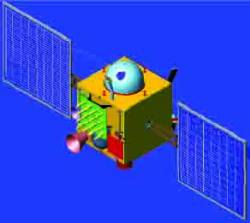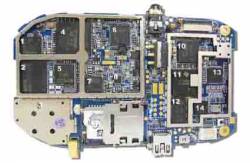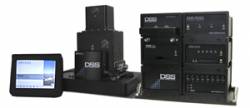CSR and Rx Networks Partner on eGPS and GPStream
Cambridge, UK–based CSR and Rx Networks, Inc., headquartered in Vancouver, Canada, have announced a solution that combines their respective eGPS and GPStream technologies.
By Glen GibbonsCambridge, UK–based CSR and Rx Networks, Inc., headquartered in Vancouver, Canada, have announced a solution that combines their respective eGPS and GPStream technologies.
By Glen Gibbons
SpectraTime has announced its receipt of a contract valued at approximately €4 million to supply rubidium space clocks for the Indian Regional Navigational Satellite System (IRNSS), a GNSS system that is under development by the Indian Space Research Organization (ISRO).
The IRNSS will consist of seven satellites, three in geostationary orbit and the other four in geosynchronous orbit. First launch of an IRNSS is currently expected in 2009. The system will transmit BOC(5,2) and BPSK signals at the L5 frequency (1176.45 MHz) and also in S-band.
By Glen Gibbons
u-blox Holding AG has announced that Microsoft Corporation selected its latest positioning engine, u-blox 5, for a new “GPS Locator” USB stick.
The “GPS Locator” USB stick will be bundled with the next release of MapPoint 2009, Microsoft’s business travel and map software package, expected to be on the shelves in August 2008.
By Glen Gibbons IEC TruTrak Evolution GPS Receiver
IEC TruTrak Evolution GPS Receiver
L-3 Interstate Electronics Corporation (IEC), based in Anaheim, California, has announced its latest miniaturized GPS receiver, the TruTrak Evolution.
A single-board, L1/L2 24-channel secure GPS receiver, the TruTrak Evolution consists of a security module, radio frequency down converter and I/O logic. The receiver employs IEC’s latest key data processor (KDP II) SAASM chipset in the XFACTOR module to provide enhanced GPS security.
By Glen GibbonsFairfax, Virginia–based defense contractor ArgonST has selected the MTi-G GPS-aided Attitude & Heading Reference System (AHRS) from Xsens Technologies, of Enschede, The Netherlands, to help fill a U.S. government contract for a new generation of reference motion trackers for use on a variety of air and ground vehicles.
By Glen GibbonsA recently announced partnership between GNSS technology innovator NovAtel, Inc., and Brilliant Telecommunications underscores the profound changes taking place in the precise timing markets.
By Glen Gibbons Neo FreeRunner (GPS chip, lower left, #3)
Neo FreeRunner (GPS chip, lower left, #3)Okay, they’re really serious about open source.
Mobile device manufacturer Openmoko has announced that it will publish the schematics for the company’s Neo 1973 and Neo FreeRunner mobile phones, further opening its mobile platform to the development community.
u-blox AG, Switzerland, maker of the GPS chip — the u- ANTARIS 4 ATR0635 — used in the Neo FreeRunner, endorsed Openmokos publishing the complete schematics for the GPS chip in the Neo FreeRunner phones.
By Glen GibbonsST-NXP Wireless, a new company bringing together key wireless operations of STMicroelectronics and NXP, will begin operations August 2 following completion of a deal announced earlier this year.
Owning thousands of communication and multimedia patents, the new joint venture will bring key technologies for UMTS (Universal Mobile Telecommunication System) and for the emerging TD-SCDMA standard, as well as other cellular, multimedia and connectivity capabilities — including WiFi, Bluetooth, GPS, FM radio, USB, and UWB (ultra-wideband).
By Glen Gibbons LV100 Compass
LV100 Compass
Hemisphere GPS recently introduced two new products: the LV100 GPS Compass Board, an OEM format based on the company’s Crescent Vector technology, and the Air IntelliFlow Dual Rate controller for aerial applications.
 Applanix DSS 439 System
Applanix DSS 439 SystemApplanix has launched a dual-camera version of its Digital Sensor System (DSS) 439 RapidOrtho airborne mapping solution and introduced full LIDAR integration options for fixed wing and helicopter installations.
The DSS 439 RapidOrtho DualCam produces a directly georeferenced, four-band ortho-imagery in a single pass, according to the company. The new product offering adds a second DSS camera with a monochromatic charge-coupled device (CCD) array specifically configured to capture near infrared (NIR) imagery.
By Glen Gibbons SE4150L
SE4150L SiGe Semiconductor, Inc. has released the SE4150L GPS radio receiver featuring dual-antenna input capability for developing GPS products.
Housed in a low profile 4x4millimeter package, the SE4150L RF integrated circuit (RFIC) features a multi-bit output, which improves sensitivity and interference resistance, according to the company. The receiver has a reported system noise figure of 1.0 dB and input third-order intercept performance (IIP3) of better than 0 dBm.
By Glen Gibbons MN5010HS
MN5010HSA convergence of a relatively new Singapore-based company, Rockwell semiconductor engineering background, and SiRF Technology’s SiRFstarIII will produce a new family of OEM GPS receivers from Micro Modular Technologies (MMT).
By incorporating the SiRF module, the MN5010HS GPS receiver module represents a departure from MMT’s use of GPS technology from u-Nav Microelectronics (now Atheros Communications GPS business unit). Established in 2005, MMT has also joined the roster of SiRF Technology value added manufacturers (VAMs).
By Glen GibbonsNavAsic Microelectronics, Inc., a relatively new startup based in Shanghai, China, has announced its first products — a GPS baseband processor, NAV1802, and an RFIC, the NAV1801.
By Glen Gibbons